Do you live in an area with some trees, an occasional park or open area, and a nearby water habitat? If so, then you probably have a crew of hard-working pest control agents working hard for you every night. That’s right! You may not see or hear them, but bats are working through the nighttime hours gobbling up mosquitoes and garden pests before they can cause a problem. If you’d like to welcome these helpful fliers to your yard or garden, a bat house is a great place to start.
In this Outdoor Tips post, we’ll learn about bat houses and how you can get them installed on your property.
What is a bat house?

A bat house functions as a roost site for bats. In other words, it is a place where they can rest during the day. Since bats are only active at night, they find sheltered places to hide during daylight hours. Typically, they are looking for places to stay warm, dry, and hidden away from predators. During the breeding season, female bats will also birth, nurse, and house their pups in roosting sites.
In the natural world, some bats roost in tree cavities or even among their branches and leaves. By contrast, other bats nest communally (in groups) in caves. As you might have guessed, humans provide lots of great roost sites mostly by accident! Empty barns, attics, garages, and other sheltered areas built by humans are fantastic resting places for bats. This, of course, is where the expression “bats in the belfry” comes from.
Advantages of bat houses
To be specific, a bat house is a custom-made shelter built exclusively for bats. As such, it can be designed to offer benefits that bats especially enjoy, including:
- Placement in an open area where they can easily fly in and out
- At a safe height away from the ground
- Small, cramped spaces for roosting, to keep large predators out
- Multiple chambers or layers so they can find temperatures that they like
- A good “grippy” material that they can grab with their claws and “hang out”
Why might you want to have a bat house?

While bats do move around the landscape in search of food, they’re more likely to concentrate around key resources. For them, these are things like sources of drinking water and roost sites. Especially in more urban areas, older buildings with areas for bats to roost are less available. This makes roost sites a limiting factor. If you can provide a roost site where bats might not have one, you could foster a new local population!
Getting started
Getting a bat house in your property is a fantastic way to bring wildlife to your yard. Furthermore, it’s a very concrete way to support local bat populations, which are declining in much of North America.
So, how can you help, and enjoy the benefits of these mosquito-chomping sky-puppies? There are two major options:
Key points for bat houses
- Make sure it is at least 24″ (~61cm) tall and 16″ (40cm) wide, so it doesn’t heat up or cool down too quickly.
- Seal all seams to keep out moisture
- Avoid using any fabrics
- Make sure your landing pad is rough wood (not sanded!) so that they can get a good grip with their little claws
- Check the inside of the house for the tips of nails or screws. These can scratch or injure bats as they move in and out.
- The more chambers, the better. More chambers means more layers of air and more choices for the bats to play “Goldilocks”. They can choose between available chambers based on their temperature and move if they feel too hot or too cold.
- If you choose to paint your bat house, use only water-based paints. Avoid oil-based paints and stains.
- Also regarding paint, choose lighter colors if you live in areas with hotter summers, and darker colors in areas with cooler summers. This will ensure that the bat house doesn’t absorb too much sunlight and get too toasty for local bats.
Building your own bat house
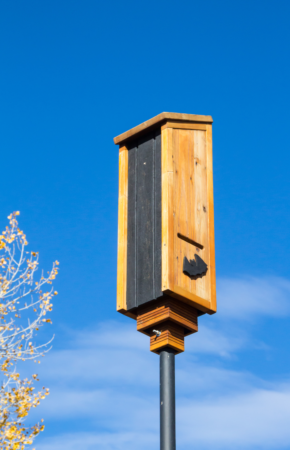
A lot of bat enthusiasts prefer making their own bat houses. First off, it’s relatively easy to do, and requires pretty rudimentary carpentry skills. Second it’s cheap—you don’t need expensive materials to do it. Your basic bat house will consist of the following components:
Here are some key tips to make sure your homemade bat house is safe for bats:
- Wooden panels or roosting boards arranged to form compartments
- A roof to shelter the house from the elements
- A pole for support, or an attachment for fixing the house to a building or tree
- A landing pad where the bats can come in, cling to the surface, and climb up into the house
The amazing non-profit Bat Conservation International has some fantastic designs for bat houses. I’d strongly recommend basing any homemade bat houses on these. They’re based on years of experience and research! Here are two popular options:
- The rocket box, which is narrower and more column-shaped
- The Four-chamber nursery, which is flatter and wider
Buying a bat house
Not the DIY type? No problem! Luckily, lots of companies are now selling bat houses for garden and backyard use. However, not all companies make bat houses that follow Bat Conservation International’s guidelines. These bat houses might be less likely to attract bats, and might not be safe for them to roost in. Here, you’ll find expert-approved bat houses designed with bat behavior and biology in mind.
BatBnB
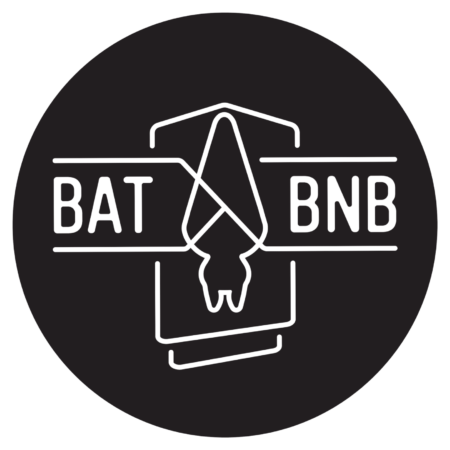
BatBNB is a cool, US-based company dedicated to bat conservation and education. They make fantastic bat houses that follow the best available guidelines from Bat Conservation International. Furthermore, their houses are made with sustainably harvested lumber Beyond the quality and attractive design of their houses, it’s great to see a company that cares so much about wildlife.
BatBnB also offers a variety of web resources including guides to placing and preparing your bat house. Check out the bat houses linked below for a 15% discount on BatBnB products through Gulo in Nature!
First, there are three basic multi-chambered bat houses with textured wooden landing pads:

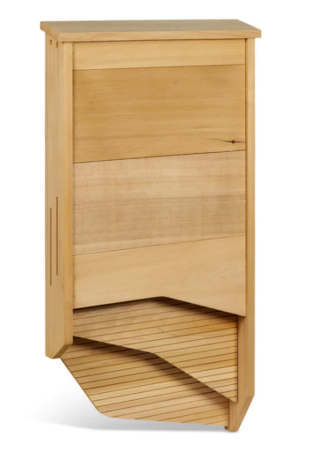
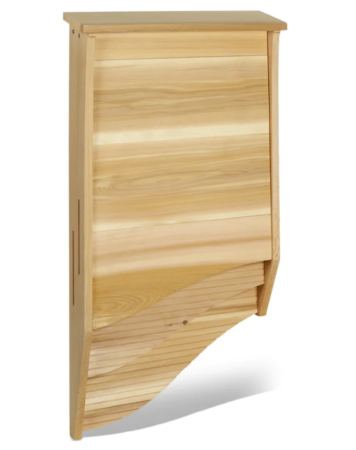
Of course, bigger is better when it comes to bat houses. This is because it not only provides room for more bats, but it also gives the bats more options. Once again, different chambers offer bats the chance to manage their own body temperatures. BatBnB’s largest model is Mammoth, a super-wide option that can hold up to 240 bats!
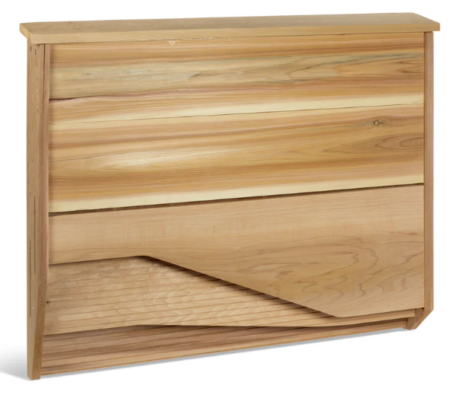
They’ve also got adorable wooden signs for your backyard or bat house, as well as stickers for promoting bat conservation. I’ve got to get some of those for my water bottles and naturalist notebook!
Other options
The Big Bat Box has several size options. The larger ones meet Bat Conservation International’s basic guidelines.

Whitehorse makes a fantastic Cedar Bat house that is large and meets BCI standards.

Installing your bat house
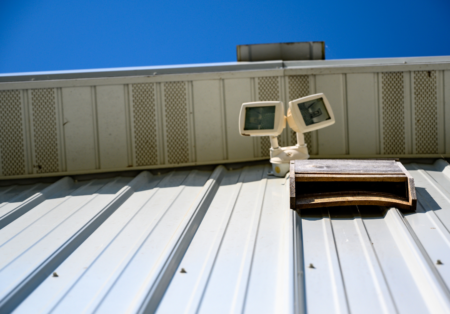
Just like with people, bats are choosy about where they live. As real estate agents’ favorite saying goes, it’s all about location, location, location. Where you put your bat house will have a big impact on whether bats move in and how often they use it.
Major points for mounting your bat house
Here are some key tips for placing your bat house in prime real estate:
- Position your bat house(s) a safe distance away from trees or other vegetative cover. 20-30 feet (7-10m) is a good start. This is important because bats need a clear flying space for exiting and entering the house. Furthermore, it limits predators’ access to the bats as they come and go.
- Make sure the house is mounted high off of the ground. As a minimum, the bottom of the bat house should be at least 10 feet (3m) up. Higher than that is even better!
- Find a spot that will get morning sunlight, and isn’t too shaded. This helps maintain comfortable and safe temperatures for the bats.
- If you have a large structure like a barn or tall garage, mount the house there rather than on a pole. Bats seem to prefer houses mounted on larger structures.
- Avoid placing your bat house on a tree. Although this may seem more “natural”, it makes the bat house an easy target for predators. Also, tree branches usually provide too much shade and prevent the house from being warm enough.
- If you can, place several bat houses together. Many bats prefer to roost socially, so the more space the better. This also means more pest control benefits when a larger number moves in!
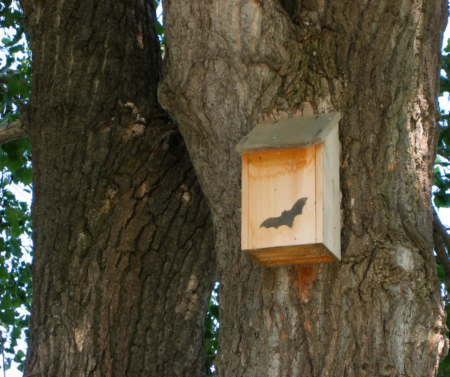
Thanks for reading!
Did you find this post helpful? Have you had good results with your own bat house? Let us know in the comments! We’re always looking for new post ideas at Gulo in Nature. If you’d like us to cover a particular topic, send a message with the Contact form or via Social Media.

